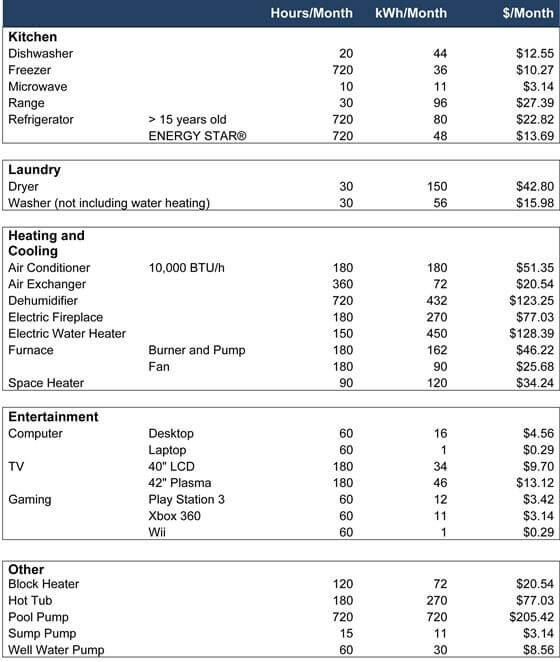How much electricity does your family use each day?
Do you use more or less than most residential customers? Here is what most consumers use in their home in the month of December. Your usage might be more or less depending on the size of your home, the number of people living in your home, the appliances and devices in your home, and any actions you have taken to save energy.

Below are typical percentage breakdowns for energy for residential use. There is also an explanation for the different energy users in your home.
Typical Residential Use and Tips
Major appliances use a significant amount of electricity in all types of households. Some of these major appliances include refrigerators, stoves, freezers, washers, and dryers. Reducing time of use for some of these appliances can help save on your bill. Purchasing ENERGY STAR® appliances will also help reduce energy consumption.
Small Appliances like coffee makers, microwaves, toaster ovens, blenders, etc., do not consume as much electricity as major appliances. Using some of these small appliances in place of a major appliance can help reduce your electricity bill.
Entertainment includes electronics such as televisions, DVD players, cable boxes, gaming systems, computers, speakers, monitors, etc. Unplugging these electronics, or switching them off using a power bar can reduce the amount of standby power they consume. There are also many electronic products on the market that are ENERGY STAR® qualified.
Lighting consists of the bulbs used in your home – indoor and outdoor. Replacing high-use incandescent bulbs with ENERGY STAR®-qualified LED or compact fluorescent light bulbs will decrease electricity use as they use up to 75% less energy and last 10 times longer. Installing motion sensors and timers for outdoor lights will also help you save.
Heating, Cooling and Ventilation products are high users of electricity in your home. These include space heaters (i.e. electric fireplaces), furnace fans, dehumidifiers, air exchangers, air conditioning units, etc. One way to reduce on Heating, Cooling and Ventilation is to install a programmable thermostat to reduce temperature at night or when you are away from home.
Using an ENERGY STAR® dehumidifier with a humidity sensor and using ceiling fans instead of air conditioners will impact savings on electricity. Insulating your home, washing your clothes in cold water, installing low-flow faucets and shower heads will also help reduce your bill.
Appliance Usage and Costs
To calculate how much it costs to run your appliances, check out the table below or use our Energy Calculator.

Note: Prices in above chart are based on the Territorial Power Support Program rate of 28.53 cents/kWh. Your rate may be higher if you use more than 1000 kWh in 30 days.


